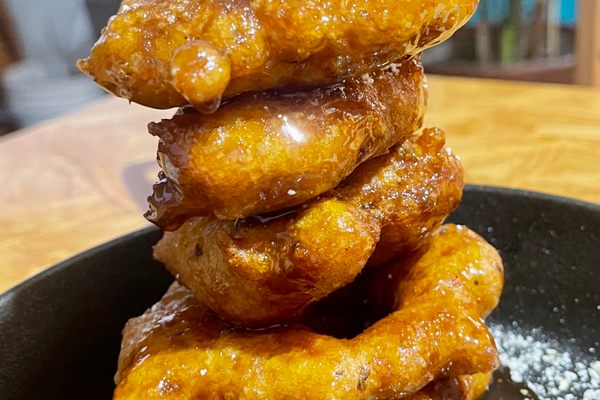The ají charapita is a pea-sized, bright-yellow chili pepper that grows in the jungle regions of Peru. With a Scoville rating between 30,000 and 100,000 units, the ají charapita certainly packs a noticeable punch, and eating one raw is not recommended. Beyond the heat, however, is a citrusy, slightly fruity note that imparts a unique flavor to dishes of all kinds.
In Peru, especially in jungle cities such as Tarapoto and Iquitos, you’ll often find an array of salsas and side dishes made with ají charapitas. Sometimes the chilies are simply blended into a fiery sauce and served alongside classic jungle dishes such as juanes and tacacho (green plantain mashed into a ball with pork rinds). Or they’re used to make the zesty jungle specialty known as ají de cocona, a vibrantly tangy but mild accompaniment made by mixing chopped cocona fruit with charapita peppers, cilantro and lime juice.
It’s rare to come across the ají charapita outside of Peru, and especially so beyond South America. The apparent scarcity of the charapita may have helped fuel a strange story that swept across the internet in September of 2016. Several articles surfaced, claiming that ají charapita was the most expensive chili in the world. The price: a whopping $11,364 per pound (or $25,000 per kilo).
Not only were these claims unsubstantiated, the scene in Peru paints a very different picture. Walk into any traditional jungle market, bodega or supermarket in the Peruvian jungle, and you’ll see bags, baskets, or buckets full of ají charapita, ready to be scooped out and sold at very reasonable prices. The charapita plant is also quite easy to grow. If the peppers were truly worth thousands of dollars, you’d expect to see charapita plantations springing up not just in Peru, but across the globe.
Written By
 Tony Dunnell
Tony Dunnell
















